Microstructures of a SiC–ZrC Ceramic Fiber Derived from a Polymeric Precursor
Abstract
1. Introduction
2. Materials and Methods
2.1. Polymeric Precursors

2.2. Fabrication of Fibers
2.3. Characterizations
3. Results and Discussion
3.1. Morphologies of the Polymeric and Ceramic Fibers
3.2. Phases Composition in the Ceramic Fibers
4. Conclusions
Author Contributions
Funding
Acknowledgments
Conflicts of Interest
References
- Yajima, S.; Hasegawa, Y.; Hayashi, J.; Iimura, M. Synthesis of Continuous Silicon Carbide Fibre, Part1. Synthesis of Polycarbosilane as Precursor. J. Mater. Sci. 1978, 13, 2569–2576. [Google Scholar]
- Ionescu, E.; Bernard, S.; Lucas, R.; Kroll, P.; Ushakov, S.; Navrotsky, A.; Riedel, R. Polymer-Derived Ultra-High Temperature Ceramics (UHTCs) and Related Materials. Adv. Eng. Mater. 2019, 21, 1900269. [Google Scholar] [CrossRef]
- Bouzat, F.; Darsy, G.; Foucaud, S.; Lucas, R. Group 4 Metal-Containing Polymers: An Overview. Polym. Rev. 2016, 56, 187–224. [Google Scholar] [CrossRef]
- Lewis, D.A.; Hogan, M.T.; McMahon, J.; Kinney, S. Application of uncooled ceramic matrix composite power turbine blades for performance improvement of advanced turboshaft engines. In Proceedings of the 64th American Helicopter Society International Annual Forum, Montreal, QC, Canada, 29 April–1 May 2008; Volume 2, pp. 961–966. [Google Scholar]
- Lee, W.E.; Gilbert, M.; Murphy, S.T.; Grimes, R.W. Opportunities for Advanced Ceramics and Composites in the Nuclear Sector. J. Am. Ceram. Soc. 2013, 96, 2005–2030. [Google Scholar] [CrossRef]
- DiCarlo, J.A.; Yun, H.M.; Hurst, J.B. Fracture mechanisms for SiC fibers and SiC/SiC Composites under Stress-rupture Conditions at High Temperatures. Appl. Math. Comput. 2004, 152, 473–481. [Google Scholar] [CrossRef]
- Cai, T.; Qiu, W.F.; Ye, L.; Liu, D.; Han, W.J.; Zhao, A.J.; Zhao, T. Synthesis of soluble poly-yne polymers containing zirconium and silicon and corresponding conversion to nanosized ZrC/SiC composite ceramics. Dalton Trans. 2013, 42, 4285–4290. [Google Scholar] [CrossRef] [PubMed]
- DiCarlo, J.A. Advances in SiC/SiC Composites for Aero-Propulsion. In Ceramic Matrix Composites; Bansal, N.P., Lamon, J., Eds.; John Wiley & Sons, Inc.: Hoboken, NJ, USA, 2015; pp. 217–230. [Google Scholar]
- Lv, X.X.; Qi, Z.; Jiang, Z.Y.; Zhou, Y.R.; Zhao, W.Q.; Jiao, J. The microstructure and mechanical properties of silicon carbide fibers with boron nitride interphase. Mater. Sci. Eng. 2019, 678, 012061. [Google Scholar] [CrossRef]
- Schmalzried, C.; Schwetz, K.A. Silicon carbide and boron carbide hard materials. In Ceramic Science & Technology; Riedel, R., Chen, I.W., Eds.; Wiley-VCH: Weinheim, Germany, 2008; Volume 2, pp. 131–149. [Google Scholar]
- Cannon, W.R.; Langdon, T.G. Creep of ceramics Part 1. Mechanical characteristics. J. Mater. Sci. 1983, 18, 1–50. [Google Scholar]
- Hasegawa, Y. Synthesis of Continuous Silicon Carbide Fibre, Part 6. Pyrolysis Process of Cured Polycarbosilane Fibre and Structure of SiC Fibre. J. Mater. Sci. 1989, 24, 1177–1180. [Google Scholar] [CrossRef]
- Takeda, M.; Imai, Y.; Ichikawa, H.; Kasai, N.; Seguchi, T. Thermal Stability of SiC fiber Prepared by an Irradiation Curing Process. Compos. Sci. Technol. 1999, 59, 793–799. [Google Scholar]
- Lipowitz, J.; Freeman, H.A.; Chen, R.T.; Prack, E.R. Composition and structure of ceramic fibers prepared from polymer precursors. Key Eng. Mater. 1987, 655, 234–239. [Google Scholar] [CrossRef]
- Lipowitz, J.; Rabe, J.A.; Zangvil, A.; Xu, Y. Structure and properties of SYLRAMICTM silicon carbide fiber- A polycrystalline, stoichiometric β-SiC composition. Cera. Eng. Sci. Proc. 2009, 18, 147–157. [Google Scholar]
- Tian, Y.L.; Ge, M.; Zhang, W.G.; Yu, S.Q.; Lv, X.X. Metallocene Catalytic Insertion Polymerization of 1-Silene to Polycarbosilanes. Sci. Rep. 2015, 5, 1–5. [Google Scholar] [CrossRef] [PubMed]
- Tian, Y.L.; Zhang, W.G.; Ge, M.; Yu, S.Q.; Lv, X.X.; Zhang, T.T. Polymerization of Methylsilylene into Polymethylsilanes or Polycarbosilanes after Dechlorination of Dichlorome-thylsilanes? RSC Adv. 2016, 6, 21048–21055. [Google Scholar] [CrossRef]
- Lv, X.X.; Yu, S.Q.; Ge, M.; Tian, Y.L.; Zhang, W.G. Synthesis and microstructure of continuous composite ceramic fibres of ZrC/ZrB2-SiC derived from polymeric precursors. Ceram. Int. 2016, 42, 9299–9303. [Google Scholar] [CrossRef]
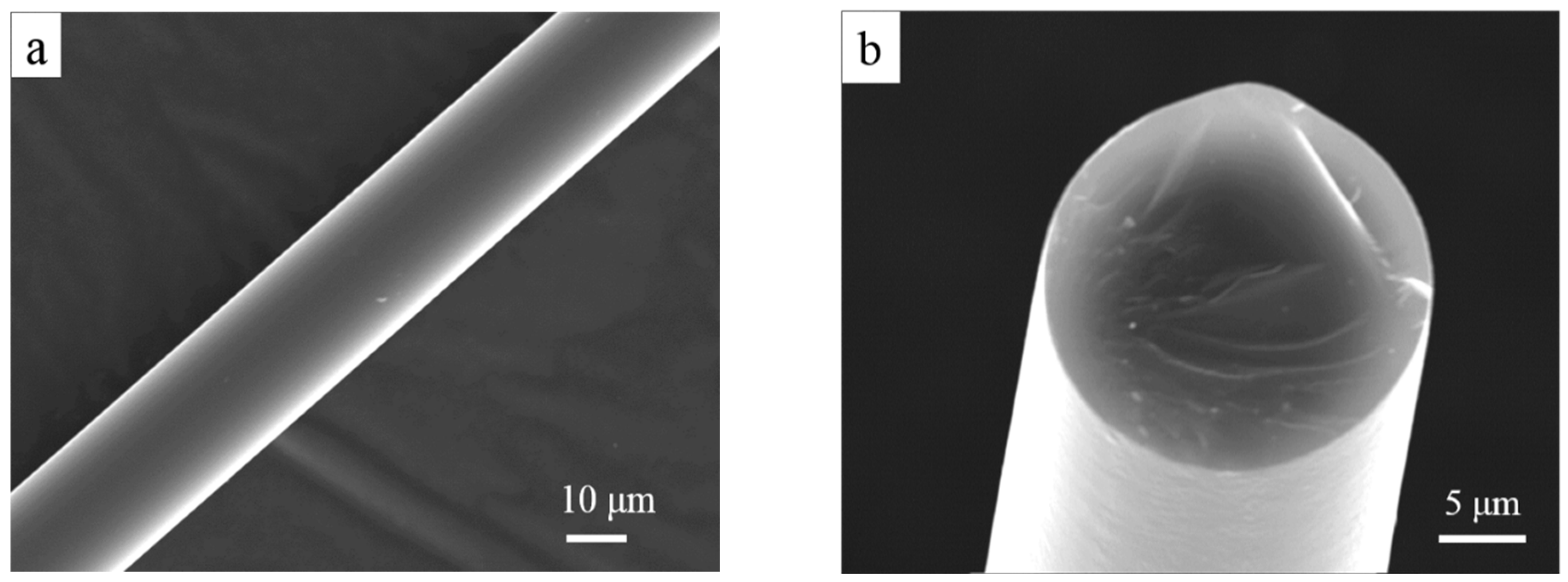

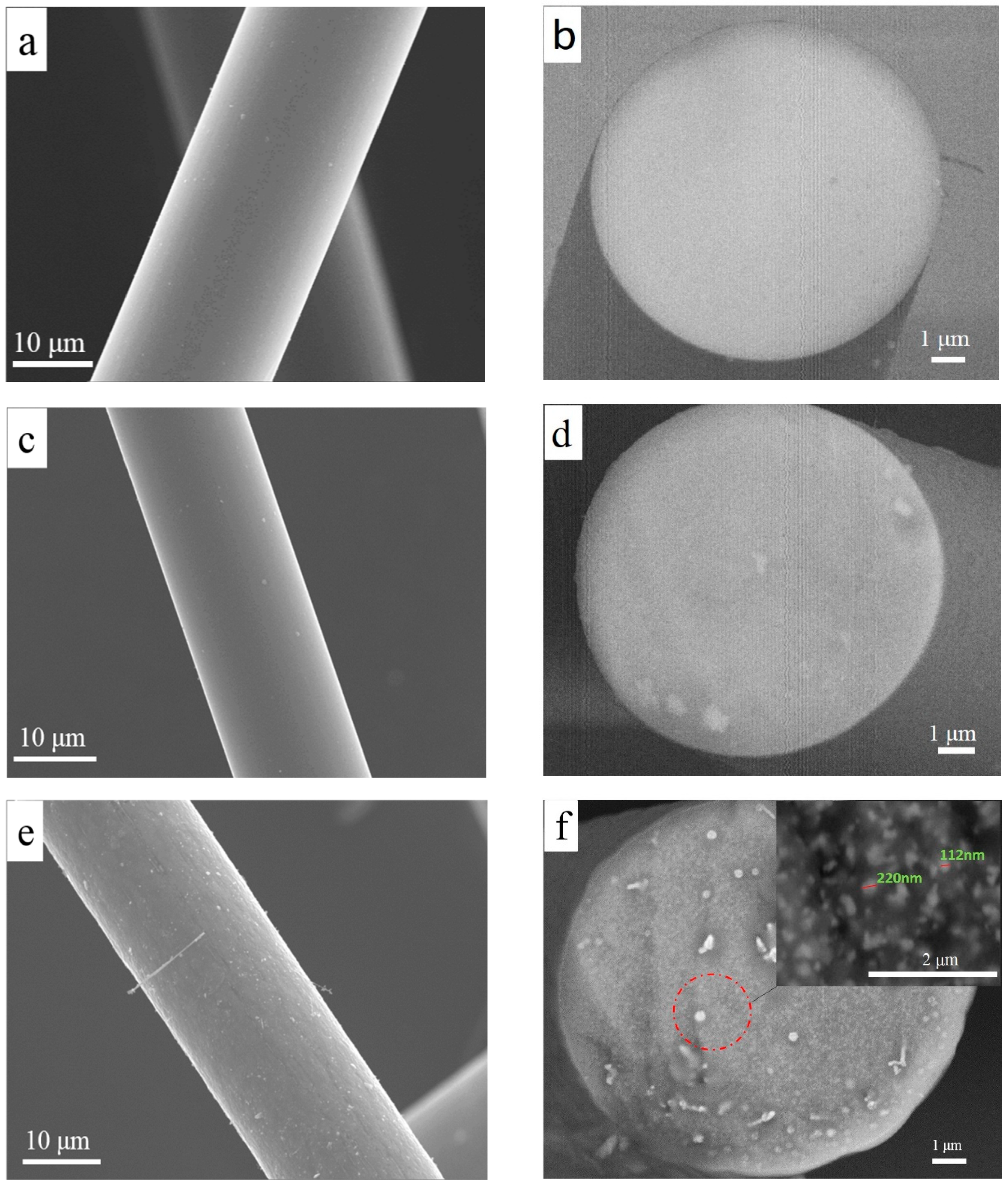
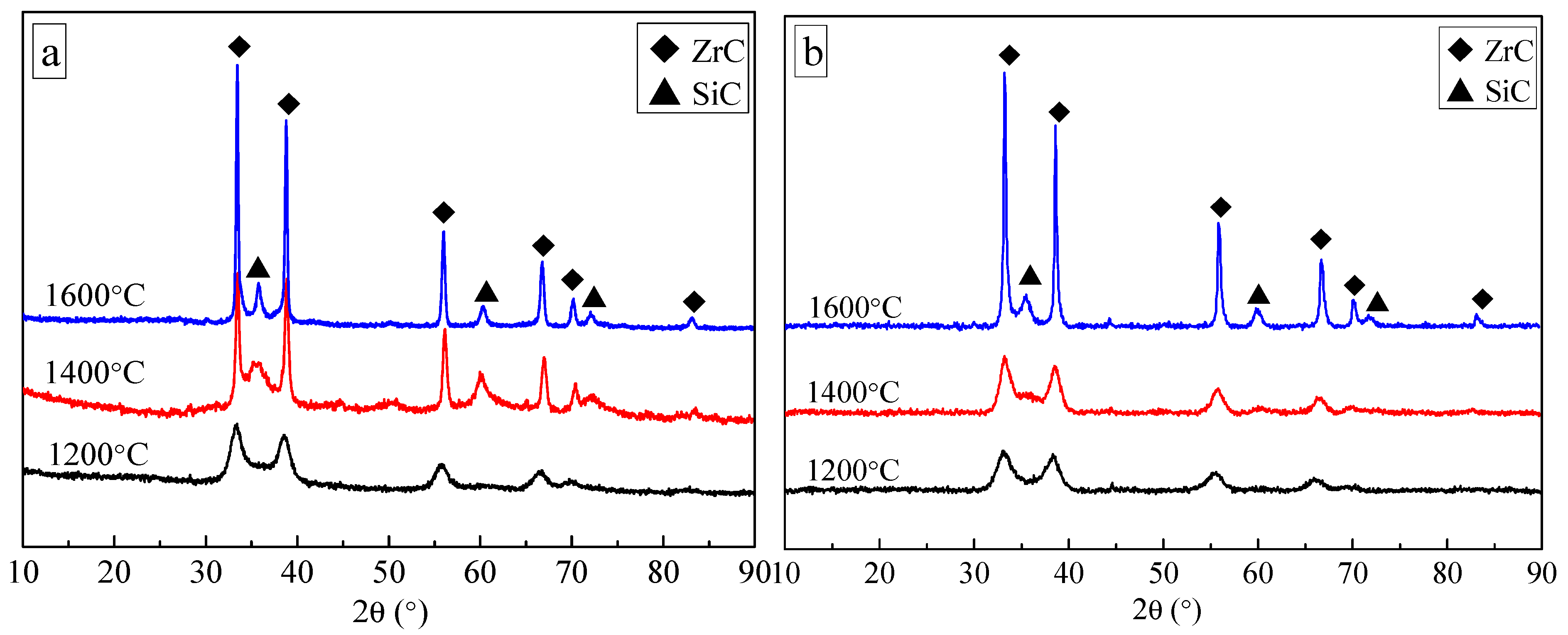
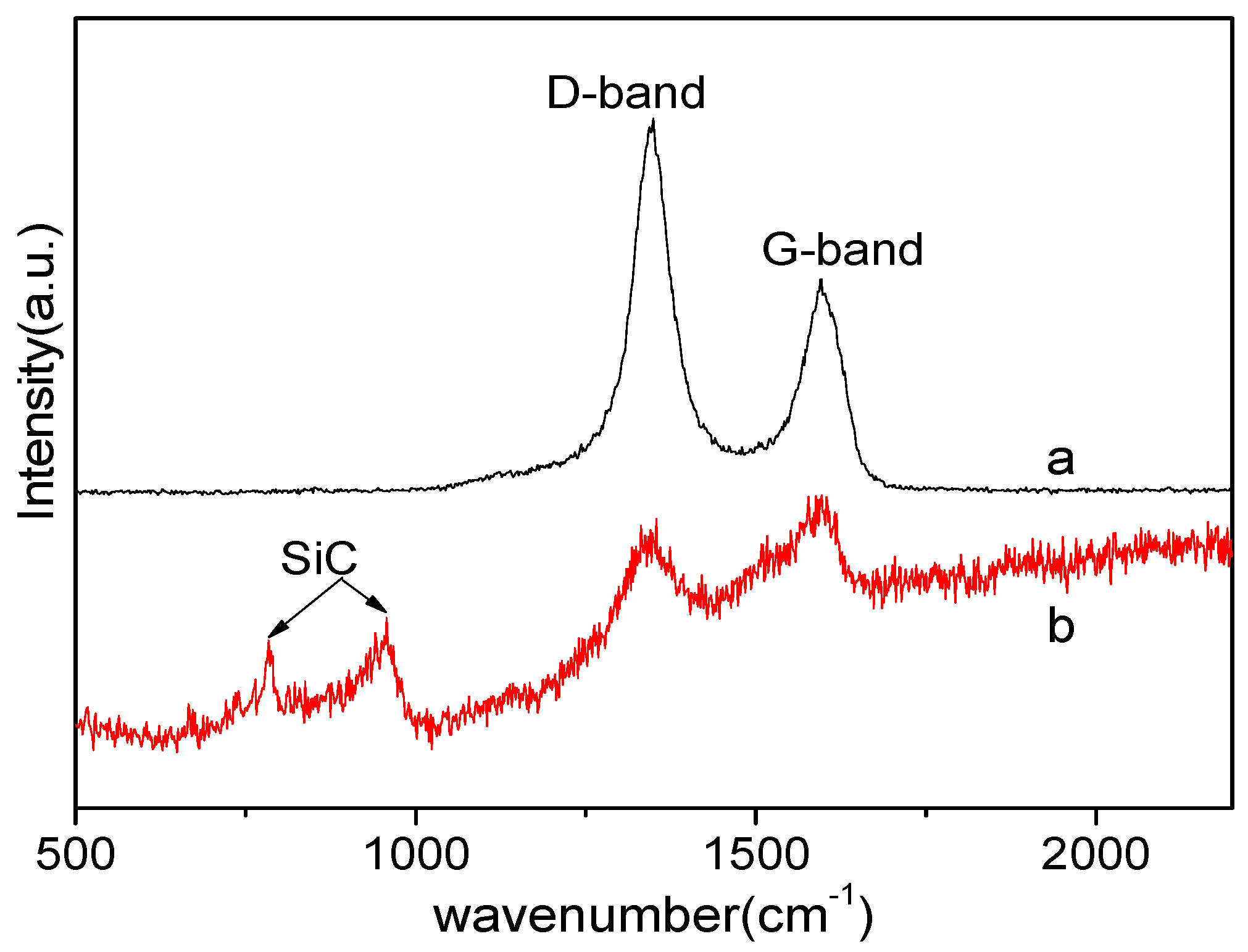
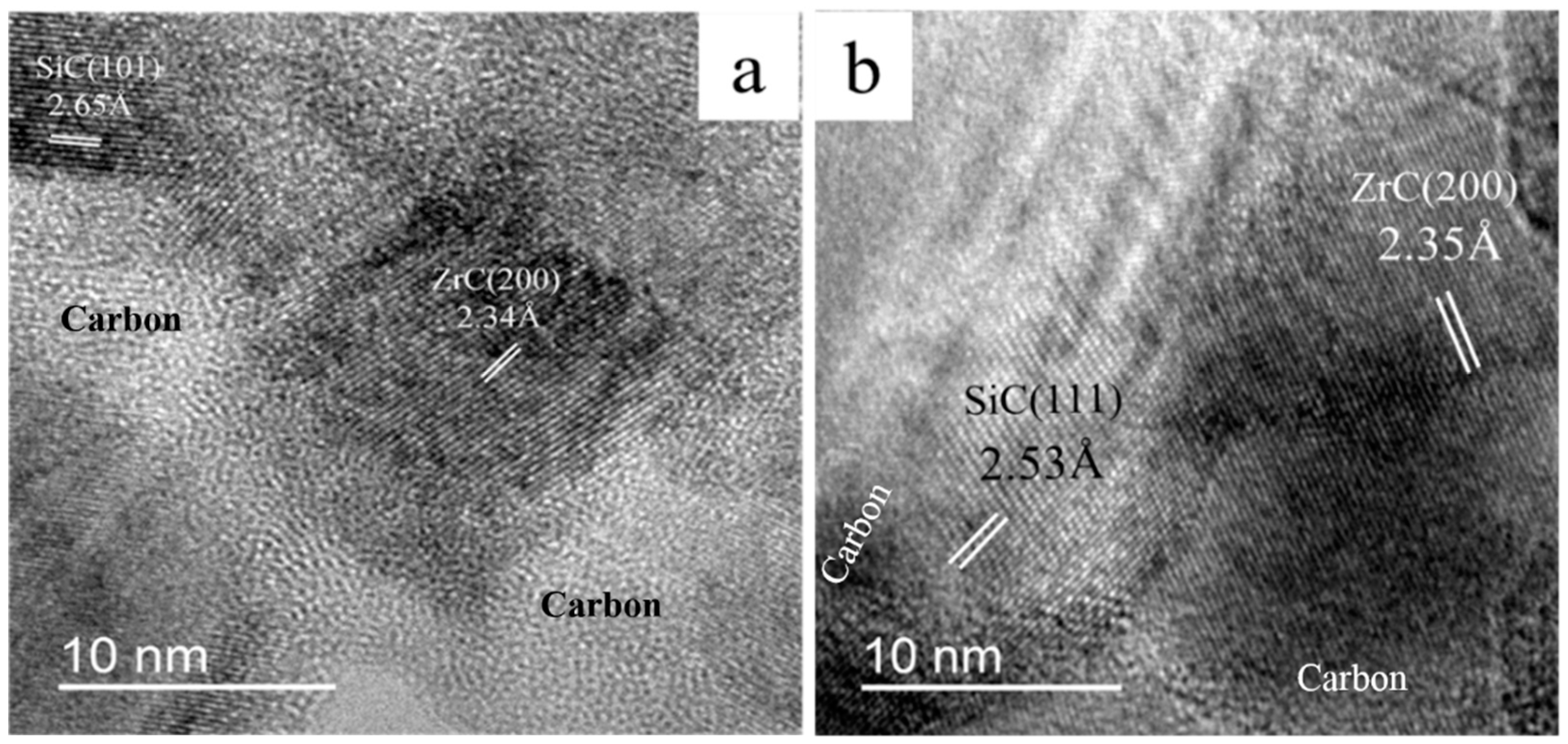
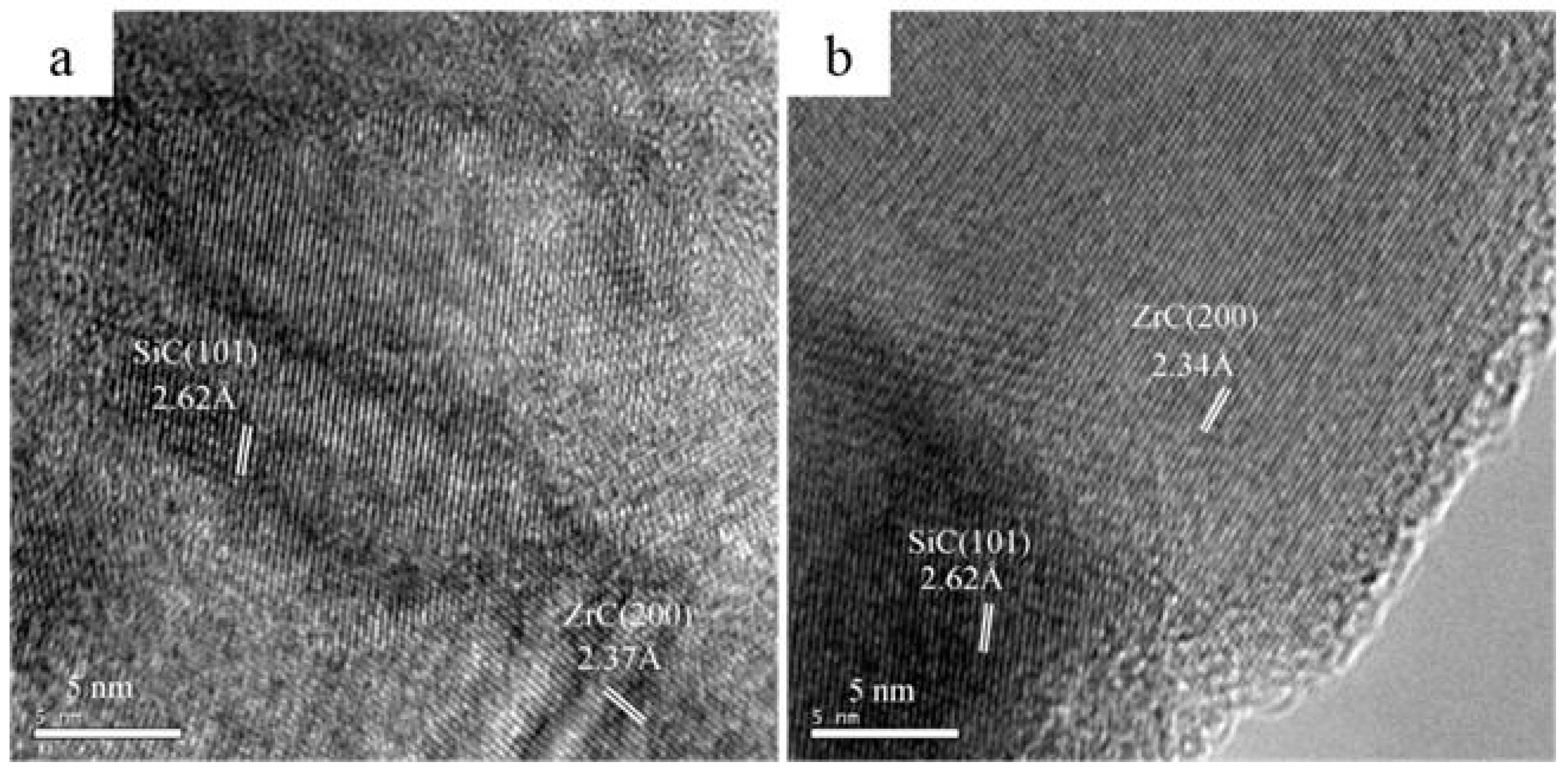
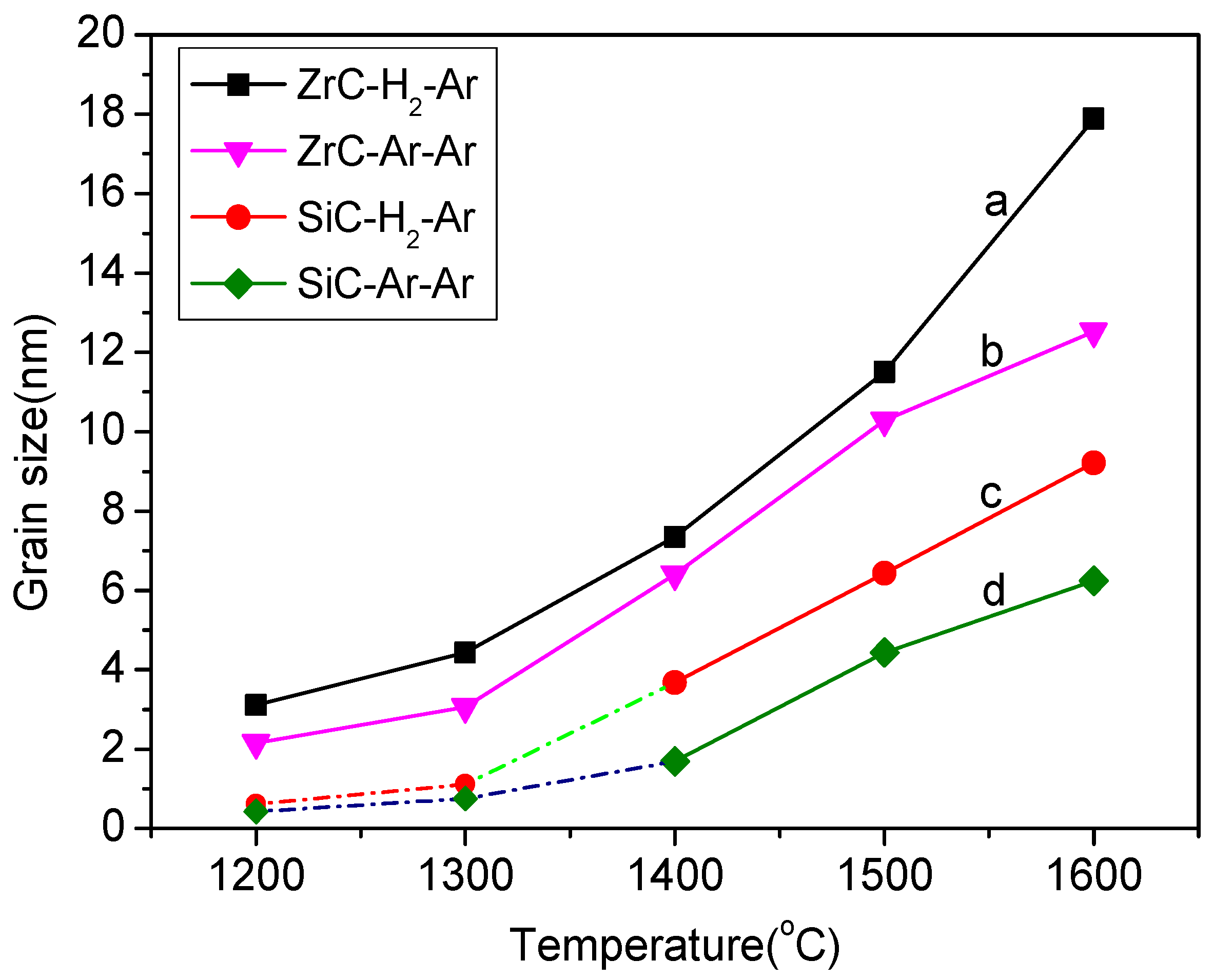
| Content (wt %) | Si | C | Zr | O | H | Cl | C/(Si + Zr) Atomic Ratio |
|---|---|---|---|---|---|---|---|
| Green fibers | 32.94 | 44.37 | 6.80 | 1.21 | 12.66 | 2.02 | 2.96 |
| Fibers in Ar (1000 °C) | 43.82 | 39.51 | 14.88 | 1.89 | / | / | 1.90 |
| Fibers in H2 (1000 °C) | 51.95 | 28.32 | 17.10 | 2.63 | / | / | 1.15 |
| Ar–Ar process fiber at 1600 °C | 45.19 | 38.82 | 14.93 | 1.16 | / | / | 1.82 |
| H2–Ar process fiber at 1600 °C | 52.73 | 27.68 | 17.45 | 2.10 | / | / | 1.11 |
© 2020 by the authors. Licensee MDPI, Basel, Switzerland. This article is an open access article distributed under the terms and conditions of the Creative Commons Attribution (CC BY) license (http://creativecommons.org/licenses/by/4.0/).
Share and Cite
Ge, M.; Lv, X.; Zhang, H.; Yu, S.; Lu, Z.; Zhang, W. Microstructures of a SiC–ZrC Ceramic Fiber Derived from a Polymeric Precursor. Materials 2020, 13, 2142. https://doi.org/10.3390/ma13092142
Ge M, Lv X, Zhang H, Yu S, Lu Z, Zhang W. Microstructures of a SiC–ZrC Ceramic Fiber Derived from a Polymeric Precursor. Materials. 2020; 13(9):2142. https://doi.org/10.3390/ma13092142
Chicago/Turabian StyleGe, Min, Xiaoxu Lv, Hao Zhang, Shouquan Yu, Zhenxi Lu, and Weigang Zhang. 2020. "Microstructures of a SiC–ZrC Ceramic Fiber Derived from a Polymeric Precursor" Materials 13, no. 9: 2142. https://doi.org/10.3390/ma13092142
APA StyleGe, M., Lv, X., Zhang, H., Yu, S., Lu, Z., & Zhang, W. (2020). Microstructures of a SiC–ZrC Ceramic Fiber Derived from a Polymeric Precursor. Materials, 13(9), 2142. https://doi.org/10.3390/ma13092142




